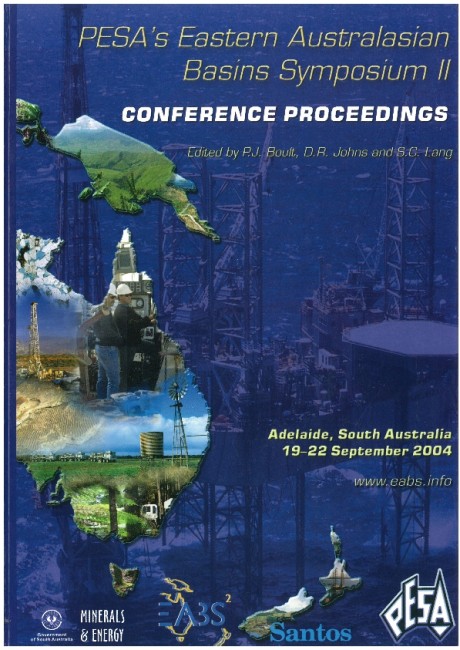Publication Name: PESA's Eastern Australasian Basin Symposium II
Authors: C.M. Reid and C.F. Burrett
Date Published: December 2004
Number of Pages: 28
Reference Type: Book Section
Abstract:
The glaciomarine Lower Parmeener Supergroup, onshore Tasmania Basin, is currently targeted by hydrocarbon exploration and contains mature potential source, reservoir and seal rocks. Basal diamictites are overlain by organic siltstone of the Woody Island Formation, containing the alga Tasmanites, in places accumulated as the Tasmanite Oil Shale. The siltstone has low TOC and type III kerogens, the oil shale high TOC and type I kerogens. Fossiliferous marine siltstone and sandstone follow, before widespread deposition of carbonaceous siltstone and sandstone (Liffey Group). The Liffey Group has good TOC and type II and III kerogens. Porosity in sandstone is fair to good, but permeability is limited by quartz and carbonate cements. Oil-filled inclusions are present in some Liffey Group sandstone beds. Thick sequences of marginal marine and marine fossiliferous siltstone and sandstone superpose these, the siltstones forming potential local and regional seal units.The Lower Parmeener Supergroup is succeeded by the thick non-marine Upper Parmeener Supergroup, and intruded by thick dolerite sheets in the mid Jurassic. The latest Carboniferous to Triassic Parmeener Supergroup is overlain by an unknown thickness of Jurassic to Cretaceous, now much eroded, plus Tertiary sediments.
Vitrinite reflectance analyses indicate the Woody Island Formation and Liffey Group are within the oil generation window in the central basin, with entry into the gas window in the south and southwest. Maximum burial occurred during the mid Cretaceous. A hydrocarbon seep in the south of the basin has been linked to a Tasmanites source. Structural traps probably exist within the Tasmania Basin but need to be seismically defined.


